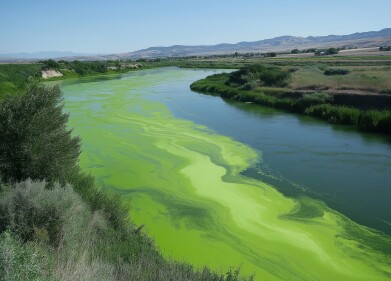Environmental laboratory
PEFTEC Poster Presentation - "Detection of Organic Pollutants with Whole Cell Biosensors"
Sep 12 2015
Dr Kuncova Gabriela, from Institute of Chemical Process Fundamentals ASCR, presents "Detection of Organic Pollutants with Whole Cell Biosensors"
Microorganisms producing bioluminiscence or coloured compounds in precence of selected classes of pollutants are potential cheap detectors of bioavailable contamination. Here we demonstrated analytical features of three whole cell optical biosensors.
Contamination with benzene, toluene, ethylbenzene and xylene (BTEX) was detected with bioluminescent bioreporter Pseudomonas putida TVA8, which was constructed by introducing the tod-luxCDABE gene fusion into the chromosome of P. putida F1, a bacterium capable of biodegradation of toluene. Another group of aromatic compounds was detected with P. fluorescens HK44, bacterium capable of emitting light upon exposure naphthalene, salicylate, and other substituted analogs. Polychlorinated biphenyls (PCB) were detected, via measurement of light absorption (λ= 400 nm), using P. putida 2, bacterium selected from contaminated places in the Czech Republic.
Selectivity of bioluminiscence responses was checked with free cells. 23 compounds, substituents of benzene induced bioluminiscence of free cells P putida TVA8. 104 compounds, substituted naphthalenes and naphthalene-like compounds were tested as inducers of bioluminescence of Pseudomonas fluorescens HK44 . Selectivity of production of yellow intermidates with P. putida 2 was determined with 18 congeners of PCBs. With the aim to facilitate manipulation with living cells, bacteria were entrapped in silica-gel layers (thickness 2 mm). The silica-gel layer with encapsulated cells (WCB) might be stored before use for > 3 month at 4°C.
According the elaborated laboratory protocol, WCB with appropriate cells was immersed in contaminated water and cultivated for 3 hours. After cultivation, in case of detection BTEX or naphthalene analogs, bioluminescence was measured. PCBs were detected as increasing of light absorption of medium at λ= 400 nm.
Detection limits of WCB with P. fluorescens HK44 were 0.05 mgnaphtaleneL-1 and 0.5 mgsalicylateL- 1. WCB with P. fluorescens TVA8 sensed 0.2 mg o-xylen in an effluent from waste water treatment and WCB with P. putida 2 produced yellow colour visible with naked eye in presence of commercial mixture of polychlorinated biphenyls Delor 103 in concentrations ≥1 mg l-1.
Detection of pollutants with WCB avoids the use of laborious analytical methods and expensive instrumentation. Application of WCB is potentially advantageous in screening tests that needed plenty analyses of the same kind. A localisation of the most contaminated spots in polluted zones or tight monitoring of bioremediation and monitoring of a leakage of contaminants with WCB combined with chemical analysis is proposed as a faster and cut-price method.
Digital Edition
AET 28.4 Oct/Nov 2024
November 2024
Gas Detection - Go from lagging to leading: why investment in gas detection makes sense Air Monitoring - Swirl and vortex meters will aid green hydrogen production - Beyond the Stack: Emi...
View all digital editions
Events
Jan 12 2025 Abu Dhabi, UAE
Jan 14 2025 Abu Dhabi, UAE
Jan 20 2025 San Diego, CA, USA
Carrefour des Gestions Locales de L'eau
Jan 22 2025 Rennes, France
Safety, Health & Wellbeing LIVE
Jan 22 2025 Manchester, UK



















